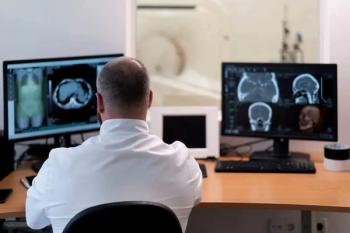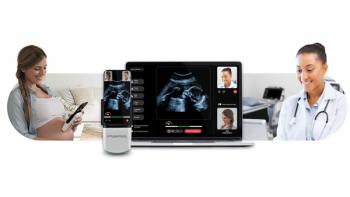
Ultrasound First to Screen for Appendicitis Cost Effective
Patients with suspected appendicitis can be effectively screened by ultrasound, using CT only if more information is needed.
Using ultrasound first for appendicitis screening, following with CT only if clarification is needed, is cost effective and reduces patient radiation exposure, according to a study published in the
Researchers from the Thomas Jefferson University evaluated the cost effectiveness of using an ultrasound-CT protocol compared with the standard protocol of CT-only for patient presenting to the emergency department with complaints of right lower quadrant abdominal pain. Patients who were discovered by ultrasound to have appendicitis were sent directly to surgery, as CT was then no longer necessary.
Data was obtained from the CMS datasets, national hospital discharge surveys, radiology information system cases, and U.S. Census Bureau life tables. The researchers assessed the costs of the imaging tests, excess surgeries, and excess surgical deaths for the ultrasound-CT protocol compared with the costs with the CT-only protocol.
The results of the meta-analysis showed that while ultrasound was slightly less accurate than CT in detecting appendicitis, it was accurate enough to be used for first-line screening. The positive predictive value was 91.0 percent for ultrasound and 92.5 percent for CT.
The analysis of CMS files showed that utilization of CT was almost exactly two examinations (one abdominal and one pelvic) per patient but there were few ultrasounds performed. Yet, the cost of this imaging protocol was $547 per patient, whereas the cost of a limited ultrasound study would be $88 per patient. For the total U.S. population, the cost savings in imaging minus the cost of extra surgeries and extra surgical deaths is $24.9 million per year, the authors wrote.
In addition, patients who undergo ultrasound only are not exposed to radiation, as are patients who undergo CT.
The researchers concluded that an ultrasound-CT protocol for appendicitis evaluation offered potentially large savings over the standard CT-only protocol.
Another recent study compared ultrasounds to CTs for diagnosis of pediatric appendicitis. In that study, published in the
Newsletter
Stay at the forefront of radiology with the Diagnostic Imaging newsletter, delivering the latest news, clinical insights, and imaging advancements for today’s radiologists.






























